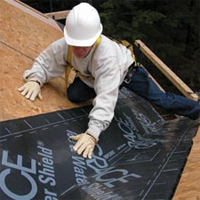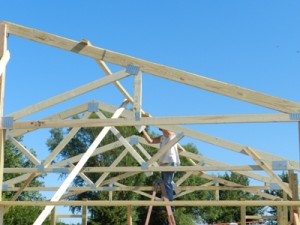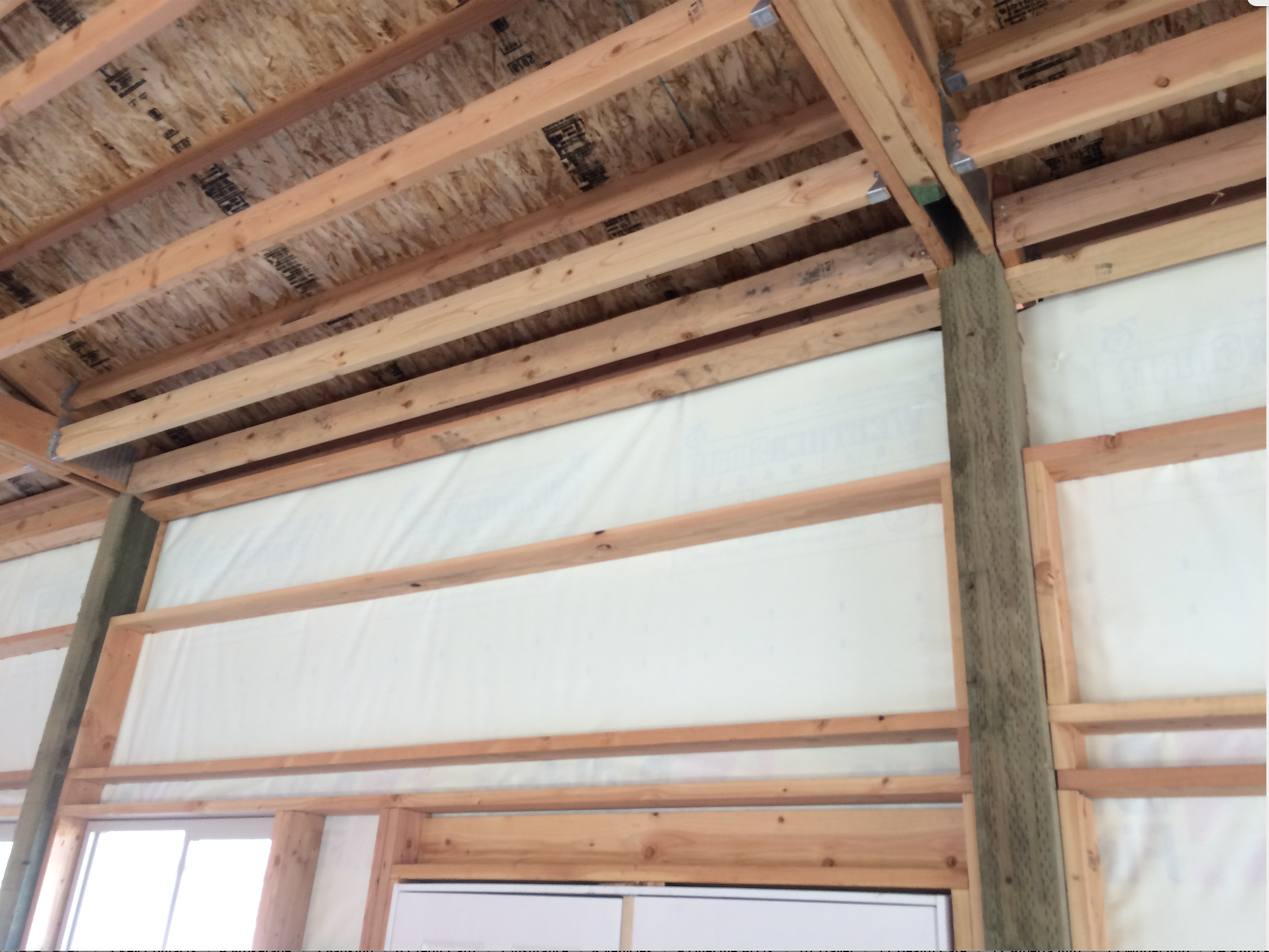Welcome to Ask the Pole Barn Guru – where you can ask questions about building topics, with answers posted on Mondays. With many questions to answer, please be patient to watch for yours to come up on a future Monday segment. If you want a quick answer, please be sure to answer with a “reply-able” email address.
Email all questions to: PoleBarnGuru@HansenPoleBuildings.com
DEAR POLE BARN GURU: We live in Texas. Can we use your configuration tool and have ya’ll create a plan for us? We will be building the barn ourselves.
If so, how much would the plan be for a 24 by 40 pole barn, 12 foot side walls, 6/12 roof pitch, one garage door, one personal door and 4-6 windows?
Thanks, Dan
DEAR DAN: We’d love to help you out with your proposed project – in fact it is what we do every day! Our system is totally geared to people who want to find the most savings as well as enjoying the pride of ownership which comes with a job well done.
Mike the Pole Barn Guru
DEAR POLE BARN GURU: We are undertaking a project of insulating our indoor riding arena/pole barn. We are installing the ceiling to the bottom of the trusses (got the ok from a structural engineer). We cannot decide what would be the best type of insulation to put in top of the ceiling. The choices: 1) spray foam, too toxic, too expensive. 2) blown cellulose/paper product-worried if it gets wet through the roof vent, worried that critters nest in it, worried that it blows around (from roof vent) 3) fiber glass – carcinogenic if you breath it in, while installing mostly, degrades through the years, critters can nest in it. 4) hard sheets of Styrofoam – like that it is solid, won’t rot if wet, won’t blow around, 4 x 8 sheets fit in between the trusses, don’t know if the “R” value is high enough or if it would insulate enough. We can’t decide what would be best. The ceiling is 29 gauge metal panels, looks like roofing. Question from Cindy in Warwick, NY
DEAR CINDY: Trying to insulate an indoor riding arena will literally be an undertaking and there is a strong possibility it will prove to be an untenable task just trying to heat the huge volume of space.
Before getting too deeply into your challenges, there needs to be a thermal break between the roof framing and the roof steel. If one was not installed at time of construction, the best choice might be to have a thin layer of spray foam placed on the underside of the roofing.
The other option would be to remove the roof steel, place the reflective radiant barrier and then reinstall – which could easily be quite an undertaking.
With the condensation problems solved, ventilation is the next step to tackle. If you have vented overhangs and ridge, it is probably adequate. If not, an entire new set of issues awaits you – as gable vents will become the only Code approved method of ventilation. If water is coming through your ridge vent, then it was done incorrectly (either wrong product, or poor installation) and should be replaced or repaired.
My recommendation is going to be blown in either cellulose or fiberglass. It is going to give you the highest R value per dollar. A professional installer can blow it in, removing the risk of you inhaling. In your part of the country you should probably be looking at as high as R-60. Once installed the probability of the insulation blowing around in your attic is small and even a nominal amount of settling can be handled by adequate thicknesses to begin with.
As far as degradation of blown insulation – we are talking about decades, not months or years. If you do blow in insulation and have vented eaves, be sure to place insulation baffles (cut from high R foam board) appropriately to keep insulation from falling into the overhangs. The baffles also allow an inch of clear net airflow over the top.
Mike the Pole Barn Guru
DEAR POLE BARN GURU: I want to submit two requests for quotes – one for a larger building and one for a smaller building – because I don’t yet know if the house I will decide to buy and renovate will have an attached garage or not. If it does have an attached garage, then I would go with the smaller building. If the house does not have an attached garage, then I will want to go with the larger building. Both buildings would need a back overhead door for driving our trailered boat in through the back and out the front. Both buildings would need one taller and wider opening for the boat and either one or two smaller openings for cars/equipment. Both buildings would have wainscot, single-hung windows, all metal roof and siding, no skylights, eave lighting, ridge vent, etc.
I am thinking of a residential pole gable building garage/workshop combo for my husband’s home workshop, home lawn and snow equipment, 22′ boat on trailer, shelving storage, etc.
Can I submit more than 1 request for a quote on-line or would it be better to talk with a customer rep on the phone and/or submit drawings, or wait until I find the house that I am going to renovate in order to see if it has any attached garage?
Thank you,
Double Requests
DEAR DOUBLE: Some of the answer depends upon your goals. If you need some sort of budgetary figures only, to assist with your house purchasing adventure, then requesting multiple quotes online will be a quick way to get started.
Ultimately, until you have actually purchased a property, any preliminary information is going to be just what it is – preliminary. The best dictate for what you will eventually build will be determined by the property you will be building on.
Once you have an idea – you can get more than one quote either online, or by calling the toll-free number listed on the website – one of our building designers will be happy to assist you in your planning.
A caution – be sure to talk with the Planning Department which has jurisdiction over any property you are considering purchasing. There may be restrictions on what you will be allowed to build and it is best to find them out prior to signing the check.
Mike the Pole Barn Guru










Mike, I have read several very interesting articles here and you seem to do a good job of debunking bad information. I am in the engineering field and working on building design for myself. It will be climate controlled 24/7. Most people around here are just pinching 6″ glass batts between the sheeting and framing. We both know that R value reduction is hardy to quantify but certainly NOT the rated R-19 is being achieved.
I need to achieve a high quality air seal and high R value. Approx an R25 wall and R40 roof. There does not seem to be much information out there for people that want real R value, not just “some”. I was considering pinching a 2″ unfaced batt between a reverse PBR panel and the frame, then try to apply a plastic backed glass batt inside. LOTS of labor. Obvious spray foam can get this job done but way too expensive and very difficult to work around if I need to change something.
I was pondering something like a blow “on” batts or better yet, cellulose?? I would have to have a good way to cover it and seal it though as it would start to sag in the roof. Otherwise easy stuff to work around though! What do you recommend for some real R value in a pole building on 12′ pole centers and 3′ oc purlins/gerts?
Brandon ~ to combine practicality, cost and efficiency, I’ve found nothing works better than BIBs. I’ve used it in two of my own pole buildings and with currently available technologies, can’t imagine a better alternative. https://www.hansenpolebuildings.com/blog/2011/11/bibs/
Here is some more information direct from the BIBs folks, since I wrote my original article:
There are two systems, BIBS®, and BIBS HP®. Both are registered trademarked.
BIBS® is a trademarked system that is installed by only certified BIBS® dealers who have gone through the BIBS® classroom and field training program.
The original BIBS® uses only dry fiberglass products made by CertainTeed, Johns Manville and Knauf. Their products are blown behind a Blow In Blanket System® fabric to the correct density, ranging from 1.8-2.3 lbs per cubic foot.
BIBS HP® (Hybrid system) uses between 1/2″ and 1″ of closed cell foam manufactured by tested manufacturers, then once cured, the BIBS HP® fabric is installed over the front of the stud cavity and approved fiberglass products are then dense-packed to the correct density, completing the application.
Checking density is done by cutting a specific area out of the walls at random intervals, taking the product out of the wall and weighing it. Our training requires it to be done after the first 4-5 cavities are done, then again every 800-1,000 sq. ft. of wall area till the job is complete.
You can find out more about BIBS® and BIBS HP® at our website: http://www.bibs.com, or on our new Facebook page at: https://www.facebook.com/pages/Blow-In-Blanket-System/348711258500672?ref=tn_tnmn
Or contact us at
Blow-In-Blanket Systems®
800.525.8992
For the ceiling – order trusses designed to support the weight of a 5/8″ sheetrocked ceiling, place ceiling joists (typically 2×6 #2 24″ o.c. for 12′ spans) on joist hangers between them. You will want to order the trusses with a “raised heel” to provide full insulation depth from wall to wall. https://www.hansenpolebuildings.com/blog/2012/07/raised-heel-trusses/
Over 3/4 of your heat loss is up – so this is the place to be investing your dollars. One of the beauties of the widely spaced double truss system, is there is far less thermal bridging than with conventional stick frame construction where trusses are spaced every two feet.